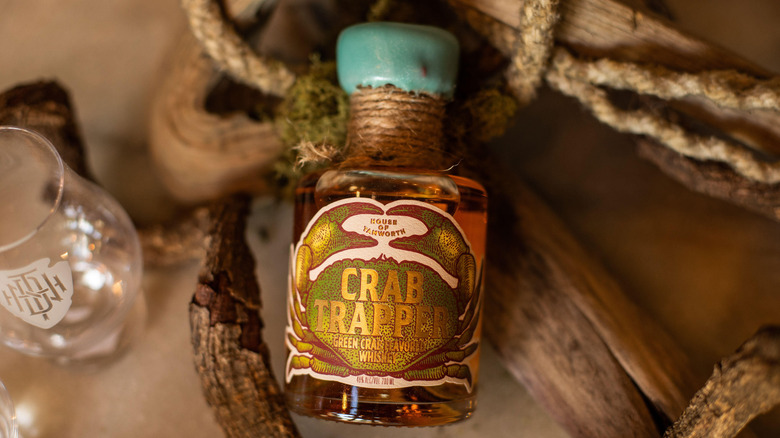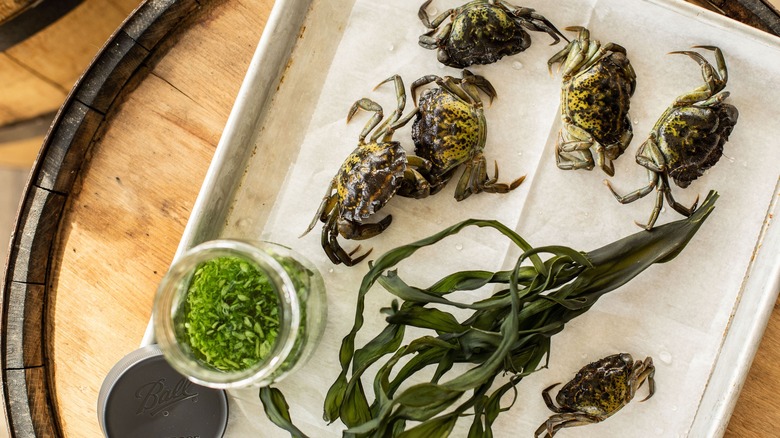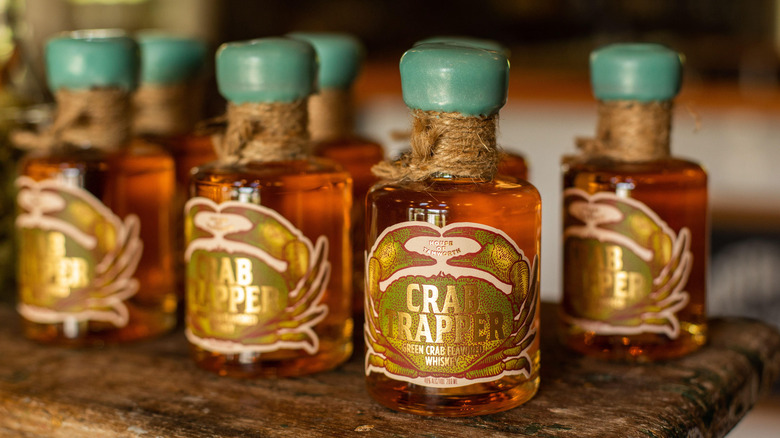The Eco-Friendly Distillery That Turns Crabs Into Whiskey
Distilleries around the U.S. have been getting creative when it comes to what they're putting in their spirits. The popularity of savory cocktails (including meat-flavored cocktails and fat-washed vodka) has spurred on a deluge of new vodka flavors, from Old Bay to Dill Pickle, meant to be used in a bloody mary or a filthy martini. But what about a savory-flavored whiskey? In particular, one flavored with ... crabs?
New Hampshire's Tamworth Distilling has been making a unique style of whiskey using an invasive species of green crabs found throughout the American Northeast. These crabs, which eat the mollusks fished along New Hampshire's coast, have been a nightmare for fishermen, and a destructive force in the local marine ecosystem. They themselves don't yield enough meat to be commercially fished for food, and they have no natural predators. Climate change has also led to warmer temperatures in winter in which these crabs continue to thrive without recourse. So Tamworth's founder, Steven Grasse, decided to join forces with the University of New Hampshire's NH Green Crab Project to put these shellfish to good use.
What does Crab Trapper whiskey taste like?
Crab Trapper is a 92-proof bourbon with a largely corn-based mash, complemented by Maine rye and malted barley, aged for close to four years. The green crabs, which are collected by local trappers, are made into stock, which is then added to the bourbon along with a low-country boil blend of spices like bay, coriander, mustard seed, paprika, allspice, cinnamon, and clove. Each bottle contains approximately two crabs worth of stock.
So what does it taste like? You might be surprised. "The unexpected results of these wild experiments are why we love using local flora and fauna as ingredients in our spirits," explained Steven Grasse in a press release. "Totally unexpectedly[,] crab and whiskey do[,] in fact[,] go together — but who knew the unique flavor combination would create an all-natural and sustainable riff on Fireball?"
Yes, Fireball, the sweet cinnamon bomb you used to take shots of in college. But this version is briny, complex, and far more interesting, with a flavor profile that is both sweet and savory. It can be used in bloody marys, added to sparkling lemonade, or drunk on the rocks. And, of course, you should serve it alongside seafood for its natural complement.
Adventurous and eco-friendly spirits
Tamworth Distilling has a history of funky spirit flavors using decidedly non-vegan ingredients. Its Saison de Frai brandy is infused with trout and bottled with boba-like trout roe inside, and its Eau de Musc bourbon is made using oil from the castor glands of beavers. And its aptly named Deerslayer whiskey is made from fermented and smoked venison. While these flavors might not be everyone's cup of tea, Tamworth never ceases to intrigue the adventurous drinker. And they highlight a continuing trend in millennial drinking habits, which are increasingly geared towards dining and drinking experiences that offer a unique story in addition to a quality product with a focus on sustainability.
An increasing number of wine and spirits brands are turning to conservation efforts as part of their branding. California's Gray Whale Gin, for example, donates part of its profits to the ocean conservation nonprofit Oceana. (In addition to using locally sourced and foraged ingredients, as well as biodegradable corks.) Vermont's Bar Hill, founded by a beekeeper, uses honey in its spirits and runs a yearly program called Bee's Knees Week to raise money and awareness for support of pollinators and their habitats. And the French wine brand Souleil, close to the Mediterranean Sea, also donates to ocean conservation efforts using profits from their vegan and organic wines. So there are plenty of options out there for the eco-conscious imbiber ... Whether or not you're interested in a side of seafood stock with your whiskey.



